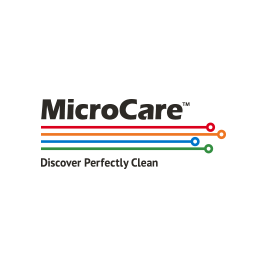Tergo™ XCF3 Superior Cleaning Fluid & Degreaser (3M Novec™ 72DE & 73DE Replacement)
Product Information
Tergo XCF3 removes caked-on greases, silicone fluids, organic contaminants and waxes
Applications:
- Precision cleaning of metals, alloys, composites and some plastics.
- Heavy degreasing and/or flux removal
- Particle displacement
- Carrier solvent for fluorinated polymers, oils and greases
- Carrier solvent for silicone oils and greases
- Drying agent after cleaning with hydrocarbons or alcohols
- An excellent replacement for HFCs, HFEs, PFCs, TCE, nPB, and PFAS-containing solvents
- Replaces Solvay SolvoKane™, Vertrel® MCA, Vertrel SDG and more
- Good alternative for 3M™ Novec™ 72DE and 73DE
Features:
- Thermally and hydrolytically stable
- Non-flammable
- Non-corrosive
- High Kb cleaning power
- Extremely low Global Warming Potential (GWP)
- Zero Ozone Depleetion Potential (ODP)
- Fast Drying
- Low surface tension, low viscocity, high liquid density
- Excellent permaeability
- Recoverable by simple distillation
- Can be used with ultrasonics
Tergo XCF3 is designed to eliminate the most tenacious contaminants in the most efficient time, leaving your parts dry and ready for further processing. Tergo XCF3 is an azeotropic, specialized solvent blend ideal for operating in open-top, ultrasonic and vacuum vapor degreasers. It has excellent solvency power for a wide range of soils, including oils, greases, waxes, and hydraulic fluids.
Formulated with hydrochlorofluoroolefin technology, this non-flammable blend exhibits a low Global Warming Potential (less than 1), no Ozone Depleting Potential, is non-hazardous and does not contain any ingredients that qualify as a PFAS in the USA or EU. With its high-KB formulation, it's ideal for cleansing metals and circuit boards and has outstanding compatibility across various metal alloys and high-density polymer substrates. Its chemical composition also renders it inhospitable to pathogens, making it invaluable in aerospace and medical settings where bioburden is a concern.
Unlike legacy solvents such as trichloroethylene (TCE) and n-propyl bromide (nPB), Tergo XCF3 is hydrolytically stable and does not require additional stabilizers or “boosters” to maintain safe cleaning efficiency. Tergo XCF3 has a low surface tension and high density, making it an effective cleaner in tight spaces and for displacing particulate and dust.
Tergo XCF3 is designed to replace TCE, nPB, HFCs, PFCs, HFEs and PFAS-containing solvents used for cleaning, degreasing, flushing or in carrier fluid applications. Tergo XCF3 can solubilize and carry chlorinated, fluorinated, silicone and hydrocarbon mixtures.
Tergo XCF3 can be used on chemically resilient substrates including metals, high density polymers and printed circuit boards.
Product Details
Product Image |
Part Number | Package | Weight | Size | Technical Data Sheet | Safety Data Sheet |
|---|---|---|---|---|---|---|

|
TXCF3GL Novec 72DE Novec 73DE Vertel MCA Solvay Solvokane MCC-TXCF3GL | Glass | 1.13 kg 2.5 lbs. | .09 L 1 Quart | ||

|
TXCF3G Novec 72DE Novec 73DE Vertel MCA Solvay Solvokane MCC-TXCF3G | Metal | 4.54 kg 10 lbs. | 3.3 L 1 Gallon | ||

|
TXCF3P Novec 72DE Novec 73DE Vertel MCA Solvay Solvokane MCC-TXCF3P | Pail | 20.4 kg 45 lbs. | 15.9 L 5 Gallons | ||

|
TXCF3D Novec 72DE Novec 73DE Vertel MCA Solvay Solvokane MCC-TXCF3D | Drum | 226.8 kg 500 lbs. | 177 L 55 Gallons |
| Part Number | MCC-TXCF3GL | MCC-TXCF3G | MCC-TXCF3P | MCC-TXCF3D |
|---|---|---|---|---|
| Package | Glass | Metal | Pail | Drum |
| Weight | 1.13 kg 2.5 lbs. | 4.54 kg 10 lbs. | 20.4 kg 45 lbs. | 226.8 kg 500 lbs. |
| Size | .09 L 1 Quart | 3.3 L 1 Gallon | 15.9 L 5 Gallons | 177 L 55 Gallons |
| Technical Data Sheet | ||||
| Safety Data Sheet |
| Appearance | Clear, colorless |
|---|---|
| Odor | Slight |
| PEL (ppm, 8-hr TWA) | 200 ppm |
| Boiling Point | 45.6°C (114°F) |
| F-Gas Compliant | |
| Evaporation Rate | <1 |
| Cleaning Strength (Kb) | 115 |
| Flashpoint | None, nonflammable |
| Global Warming Rating (100yr) | <1 |
| Ozone Impact | Zero |
| RoHS & WEEE Compliant | |
| Safety Rating | Non-flammable |
| Specific Gravity | 1.29 |
| Surface Tension | 21 Dy/cm |
| Viscosity | 0.57 cP |
| Vapor Pressure @ 20ºC | 351 |

